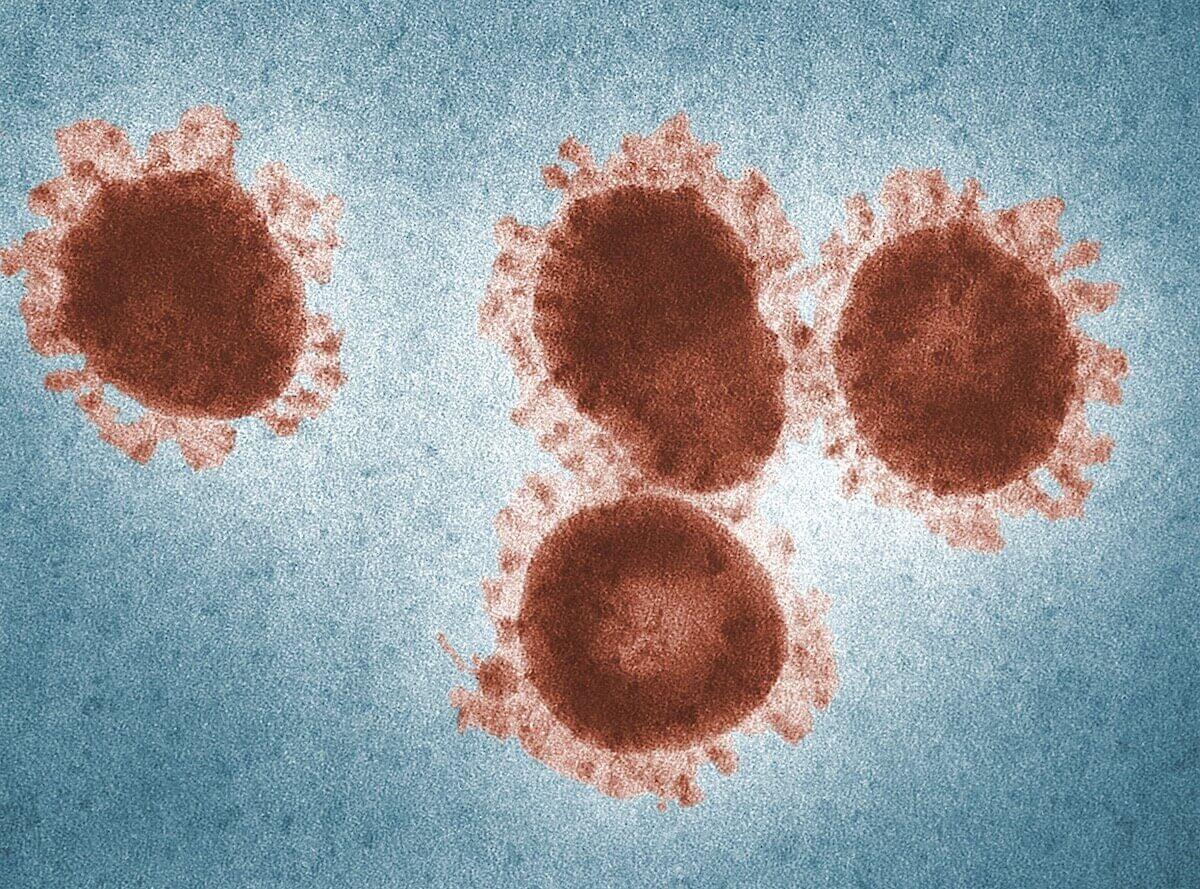新冠病毒韧性的基因:识别与冠状病毒抗性和易感性相关的DNA标记

冠状病毒(CoVs)(目Nidovirales,科Coronaviridae,亚科Coronavirinae)是许多脊椎动物物种呼吸道疾病疫情的元凶。它们是一大类单链RNA包膜病毒(+ssRNA),可以在不同动物物种中分离得到。它们的基因组大小在26到32千碱基(kb)之间,是RNA病毒中基因组最大的(因此提高了口罩的有效性)。 COVID-19,也称为严重急性呼吸综合症冠状病毒2型(SARS-CoV-2),或“2019新型冠状病毒”,是一种新病毒,我们刚刚开始理解人类的抗性和易感性。
COVID-19在某种程度上与严重急性呼吸综合症(SARS)相似,因为这两种病毒都通过相同的受体——血管紧张素转化酶2(ACE2受体)感染人类宿主,并导致类似的临床和病理特征。有趣的是,负责受体结合的刺突蛋白在2019-nCoV和SARS-CoV之间高度相似,这是由于对相同受体的显著选择所致(Wu., 2020)。研究我们的身体如何抵御SARS可能会揭示我们的身体如何抵御COVID-19。
最近的几项全基因组关联研究(GWAS)提供了更深入的见解,帮助解释为什么有些个体几乎不受COVID-19影响,而对其他人来说,这种病毒则是威胁生命甚至致命的。
在这篇文章中,我们提供了经过同行评审的文献综述,并介绍了与SARS-CoV抗性相关的候选基因信息。如果您曾在家中进行过DNA测试,例如23andMe、Ancestry DNA或Dante labs提供的测试,您可以评估您的原始DNA数据,并查看您的DNA序列与研究结果的比较。
如何分析您的DNA以抵抗或易感于冠状病毒?
步骤 1) 下载您的原始常染色体DNA文件并将其保存在安全的位置
要分析您的DNA数据,首先下载您的原始常染色体DNA并将其保存在安全的位置。 以下是从下载您的原始DNA文件的说明: 23andMe, Ancestry DNA, Family Tree DNA, Dante Labs, My Heritage, Genes For Good, Vitagene, and Living DNA.
步骤 2) 分析您的原始 DNA 文件
使用文本编辑器,如“文本编辑器”或“记事本”,通过“查找”功能或命令行搜索您的原始DNA数据。
打开您的原始DNA文件,您会注意到独特的SNP ID (rs# 或 i#)、染色体、位置和基因型的标题。不同的直接面向消费者的DNA测试公司之间格式略有不同。
要评估您从COVID-19中恢复不良的风险,请查看以下描述的DNA标记:
最近发表了几项全基因组关联研究(GWAS),描述了与感染SARS-CoV-2的患者呼吸衰竭相关的位点,并且三项研究在同一约50 kb的基因组片段中识别了SNP标记,该片段是从尼安德特人那里遗传而来的。
(Ellinghaus D et al., 2020, Zeberg & Pääbo, and Blokland et al., 2020). 此外,这些GWAS研究还识别了一些与COVID-19相关的其他DNA标记,下面的表格中列出了这些标记。此外,本帖中提到的其他DNA标记包括与SARS相关的rs4804803,以及位于血管紧张素转化酶2(ACE2)受体上的标记,该受体被证明是人类呼吸道冠状病毒NL63、SARS冠状病毒(SARS-CoV)和2019新型冠状病毒2019-nCoV/SARS-CoV的相同受体(Li et al., 2017; Lu et al., 2019)。由于冠状病毒的刺突蛋白已经进化以匹配ACE2受体,因此具有改变蛋白质序列的变异个体可能会对COVID-19产生一定的抵抗力。以下是来自ACE2转录本NM_021804.2的非同义SNP,特别值得关注的是导致重大变化的SNP,如rs199951323,它会导致提前终止密码子。
| 基因 | dbsnp | 染色体 (GRCh37) | POS | REF | ALT | 风险等位基因 | 标记效果 | 参考 |
|---|---|---|---|---|---|---|---|---|
| IVNS1ABP | rs6668622 | 1 | 185414582 | T | C | 男性易感变异 T:T 和 T:Cs | 优势比 1.44 | Roberts., 2020; |
| SRRM1 | rs111972040 | 1 | 24999361 | A | G | 风险基因型 G:G 和 A:G, 3_prime_UTR_variant | 住院优势比 = 8.29 | |
| LZTFL1 | rs35044562 | 3 | 45909024 | A | G | 风险基因型 G:G 和 A:G, intron_variant,genic_upstream_transcript_variant | odds ratio 1.60 | Blokland et al., 2020; Zeberg & Pääbo |
| LZTFL1 | rs11385942 | 3 | 45876460 | A | - or A or AAA | InDel, A:A and A:- 具有较高的呼吸衰竭易感性,intron_variant | odds ratio 1.77 | Ellinghaus et al., 2020; Roberts., 2020 |
| LZTFL1 | rs10490770 *LD with rs11385942 | 3 | 45864732 | T | C | 风险基因型 T:C 和 C:C,内含子变异体 | 杂合子携带者的优势比 1.7 | Zeberg and Pääbo., 2020; |
| LZTFL1 | rs67959919 *LD with rs11385942 | 3 | 45871908 | G | A | 风险基因型 G:A 和 A:A, intron_variant | 杂合子携带者的优势比 1.7 | |
| LZTFL1 | rs35624553 *LD with rs11385942 | 3 | 45867440 | A | G | 风险基因型 G:A 和 G:G, intron_variant | 杂合子携带者的优势比 1.7 | |
| LZTFL1 | rs71325088 *LD with rs11385942 | 3 | 45862952 | T | C | 风险基因型 C:T 和 C:C,内含子变异 | 杂合子携带者的优势比 1.7 | |
| ABO | rs657152 | 9 | 136139265 | A | C or T | 风险等位基因,intron_variant | odds ratio 1.77 | Ellinghaus et al., 2020; Roberts., 2020 |
| Intergenic | rs5798227 | 12 | 53120100 | C | - | 风险等位基因是缺失 | p = 2.2x10-7 | Blokland et al., 2020; |
| IGHV3-7 | rs11844522 | 14 | 106522576 | C | T | 易感变异 T:T, C:T | p=1.9x10-7 | |
| Immunoglobulin Lambda Locus (IGL) | rs73166864 | 22 | 23340580 | T | C or G | 易感变异 T:T 和 T:C | odds ratio 1.7 | Roberts., 2020; |
| TLR7 | rs200553089 | ChrX | 12906010 | G | T | 风险基因型 T:G 和 T:T,错义变体 | Made et al., 2020; | |
| 位于 ACE2 中的同义 SNP | ||||||||
| ACE2 | rs373153165 | chrX | 15580093 | C | T or A | 错义变体 | p.Asp785Asn/c.2353G>A | Cao et al., 2020 |
| ACE2 | rs140016715 | chrX | 15582154 | G | A | 错义变体 | p.Arg768Trp/c.2302C>T | |
| ACE2 | rs147311723 | chrX | 15582265 | G | A | 错义变体 | p.Leu731Phe/c.2191C>T | |
| ACE2 | rs41303171 | chrX | 15582298 | T | C | 错义变体 | p.Asn720Asp/c.2158A>G | |
| ACE2 | rs370187012 | chrX | 15582327 | C | T | 错义变体 | p.Arg710His/c.2129G>A | |
| ACE2 | rs776995986 | chrX | 15582334 | G | A | 错义变体 | p.Arg708Trp/c.2122C>T | |
| ACE2 | rs149039346 | chrX | 15584416 | A | G | 错义变体 | p.Ser692Pro/c.2074T>C | |
| ACE2 | rs200180615 | chrX | 15584488 | C | T | 错义变体 | p.Glu668Lys/c.2002G>A | |
| ACE2 | * |
chrX | 15585879 | A | C | stop_gained | p.Leu656*/c.1967T>G | |
| ACE2 | rs183135788 | chrX | 15585933 | T | C | 错义变体 | p.Asn638Ser/c.1913A>G | |
| ACE2 | rs748163894 | chrX | 15588434 | G | A | 错义变体 | ||
| ACE2 | rs202137736 | chrX | 15591485 | T | C | 剪接区变体+内含子变体 | c.1541+5A>G | |
| ACE2 | rs140473595 | chrX | 15591530 | C | T | 错义变体 | p.Ala501Thr/c.1501G>A | |
| ACE2 | rs191860450 | chrX | 15593829 | T | C | 错义变体 | p.Ile468Val/c.1402A>G | |
| ACE2 | rs758142853 | chrX | 15609868 | A | G | 错义变体 | p.Val184Ala/c.551T>C | |
| ACE2 | rs754511501 | chrX | 15609902 | C | T | 错义变体 | p.Gly173Ser/c.517G>A | |
| ACE2 | rs746034076 | chrX | 15609943 | T | C | 错义变体 | p.Asn159Ser/c.476A>G | |
| ACE2 | rs373252182 | chrX | 15609973 | T | C | 错义变体 | p.Asn149Ser/c.446A>G | |
| ACE2 | rs2285666 | chrX | 15610348 | C | T | 剪接区变体+内含子变体 | c.439+4G>A | |
| ACE2 | rs768736934 | chrX | 15612963 | C | T | 剪接区变体+内含子变体 | c.345+5G>A | |
| ACE2 | rs4646116 | chrX | 15618958 | T | C | 错义变体 | p.Lys26Arg/c.77A>G | |
| ACE2 | rs73635825 | chrX | 15618980 | A | G | 错义变体 | p.Ser19Pro/c.55T>C | |
| 与 SARS 相关的 SNP | ||||||||
| CD209 | rs4804803 | 19 | 7812733 | A | G | 易感基因型 A:A,upstream_transcript_variant | NC_000019.10:7747846 | Sakuntabhai et al., 2005; Chan et al., 2010 |
